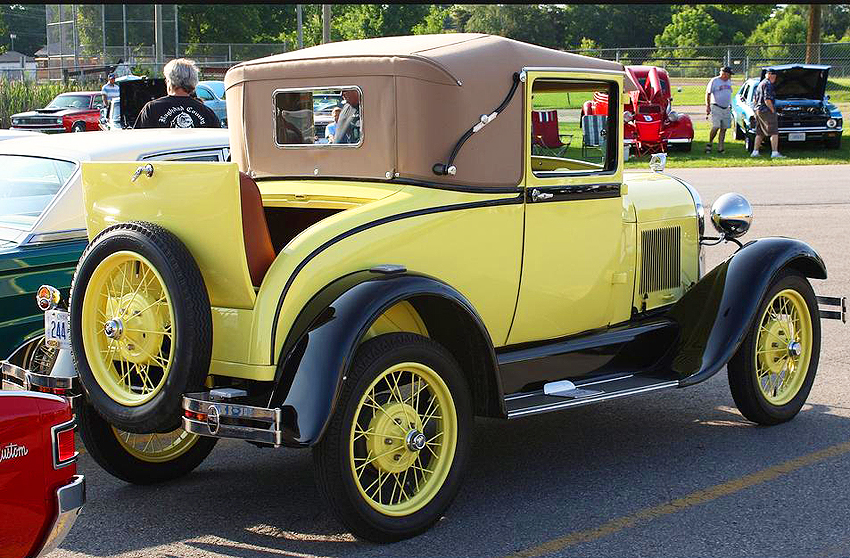
Above: the new-for-1928 Ford Model A coupe is an example of the first type of automotive vinyl roof popular during the late ’20s and early ’30s designed to evoke memories of horseless carraiges. Although it looks like a fully retractable convertible roof, it is fixed in place and cannot be lowered. One might say these roofs were the first form of “retro” auto design. (Photo credit: R Spiegelman)
Coming across a can of old glue thinner in the garage recently made me recall how I had used it to remove the padded vinyl roof on a ’79 Cadillac Sedan deVille I once owned. Which got me thinking about vinyl roofs in general and how far back in classic car culture they really go.
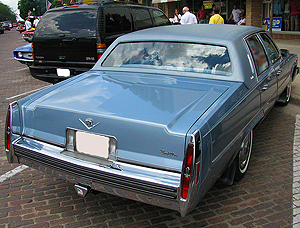
My former 1979 Cadillac Sedan de Ville with vinyl padded roof at a car show in 2001. (Photo credit: S. Connor)
98 percent of de Villes made during that era were equipped with padded vinyl on the roof. Cadillacs of my vintage with bare painted roofs were rare, so I always noticed when one passed by. I always felt when the roofs of these cars were unadulterated by vinyl, the clean lines GM designers endowed them with suddenly showed to a greater extent.
Removing the top was a painstaking process to ensure paint underneath did not get damaged. Because my car was clean and garage-kept there was no rust beneath the layer of padding. After buffing off hardened glue, the original paint looked almost new and my de Ville shined with new-found elegant simplicity.
IN THIS ARTICLE:
- I. Brief History of vinyl roofs through the years.
- II. Pictures of the types of vinyl roofs.
- III. Slide show of vinyl-covered cars from the 1920s through today.
I. A BRIEF HISTORY OF AUTOMOTIVE VINYL ROOFS
The earliest application of vinyl to the roof of automobiles in mass production was in the late 1920s, often used with “landau bars” as decorative trim to recreate the look of adjustable canopy tops on horse-drawn carriages. Two-door coupes from the 1928 Ford Model A to Packards quickly bought into this look, which gave the buyer an ambience of luxury while at the same time stirring comforting memories in their minds of youth twenty to thirty years earlier when carriages were in vogue.
These style of roof coverings (some also were formed with canvas or even leather) became almost the norm until the introduction of the 1934 Chrysler Airflow, which created a new look of smooth lines and rounded, aerodynamic curves. The appearance of the Airflow’s modern, integrated metal roof was key to creating a look of pure, smooth lines unadulterated by lumps or bumps. As the original “aero” look of this car inspired other designers to create similar designs, vinyl roofs became yesterday’s news.
Uncovered metal roofs became the mainstay until 1950. That year, Ford offered vinyl on coupe versions of its own Crestliner, Mercury Montereys, Lincoln Lidos, and Cosmopolitians to simulate real convertibles. Kaiser and Frazer brands offered them as well on all models. They didn’t catch on and were dropped across the board at the end of 1951.
Vinyl was dead again until resurfacing briefly in 1957 for two to three years on limited edition, high-end Cadillac Eldorado Broughams, Chrysler Imperials, and Lincoln limousines. While typical 1950s cars often featured two-tone paint schemes and roofs painted a different color to mimic convertible tops, it should be noted that roof surfaces were usually painted metal.
If vinyl evoked a classic retro form of elegance in the 1920s, in the 1960s it was to be about the complete opposite. It would be about making a new era of longer-lower-wider car designs coming out of Detroit hip and sporty in a “mod”, “now” kind of way.
General Motors considered public reaction to the new-age vinyl look so favorable on the 1957-58 Cadillac Eldorado Brougham model (priced twice as high as the next Caddy), it began featuring full vinyl as a factory option on Oldsmobile Starfires and Buick Skylarks in 1962. Ford also introduced the option on its 1962 T-Bird “Landau” coupe.
For 1963, G.M. full-size cars such as Chevy Impalas, Pontiac Grand Prixs and Cadillacs offered the option. Ford tested the waters on it’s ’63 Galaxie model and found many takers…and when they introduced the 1964 Mustang, vinyl was there too.
Until the mid-1960s, vinyl was associated primarily with coupes but by about 1965 it began to proliferate more on four-door sedans also. At the end of the decade it was available on every type of model from muscle cars to station wagons. By 1970, even economy model Ford Pintos featured vinyl options.
Vinyl material used for roof coverings tended to be elk-grain in texture stretched form-fittingly tight in a thin, unpadded layer until the mid-1970s. As General Motors and Ford luxury models featured more squared-off designs, their straight lines lent themselves better to the next generation of the vinyl roof – a thick layer of flexible padding covered with a smooth, glossier layer of material.
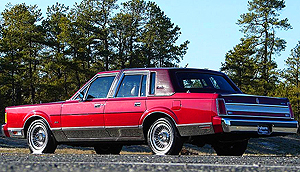
Like most American luxury cars of the 1980s, 100% of Lincoln Town Cars from 1980-89 were equipped with padded vinyl roofs.
As the 1980s became the 1990s and traditional American luxury cars all changed from square designs to rounded ones, vinyl roofs seemed out of place again they way they did in 1934 and died their hardest death yet.
Today, covering cars with vinyl is coming back in a different form. Fast becoming a trend today is the practice of heat sealing clear vinyl sections onto all body panels of the car, most often in the form of clear wrap designed to create a dull matte finish. Popular with owners of high-end Ferraris, Porsches, and other exotic cars, this is justified by the paint protection it offers. Vinyl can also be used to apply graphics or change the color of a car completely. Unlike earlier forms of vinyl coverings, modern wraps can be removed with no damage to paint underneath. (See slideshow for pictures.)
II. TYPES OF VINYL ROOF COVERINGS:
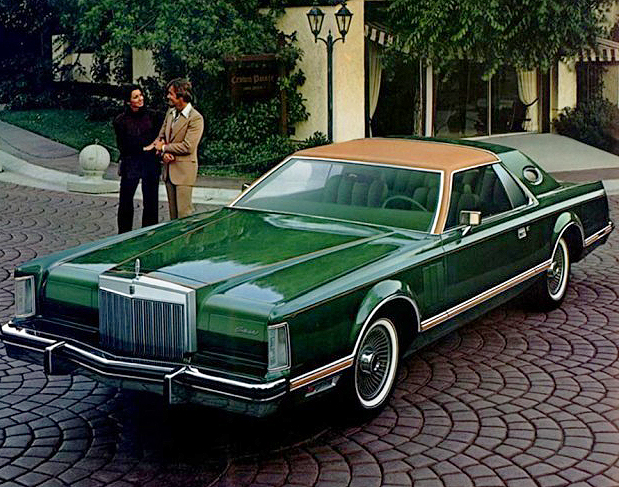
“CANOPY” type roofs cover only the front portion of the roof. Above, a 1977 Lincoln Mark V Givenchy Edition with a canopy vinyl roof. (Photo credit: Ford Motor Company)
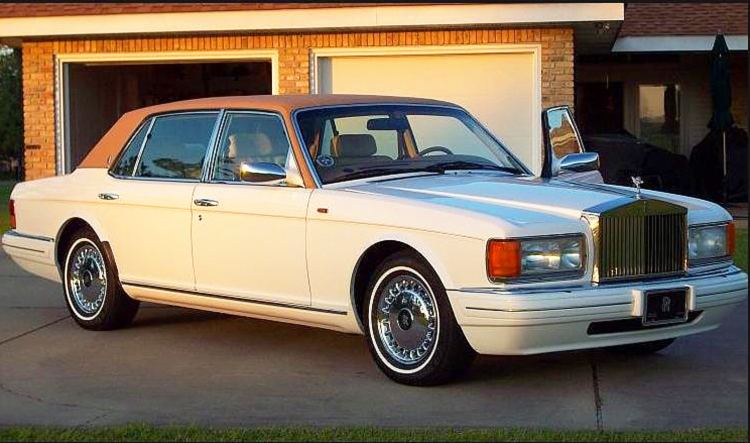
“FULL” – covers the entire roof, including A-pillars. This 1997 Rolls-Royce reminds us that Europeans were equally seduced by vinyl and had a harder time giving it up than Americans did. (Photo credit: W. Quincy)
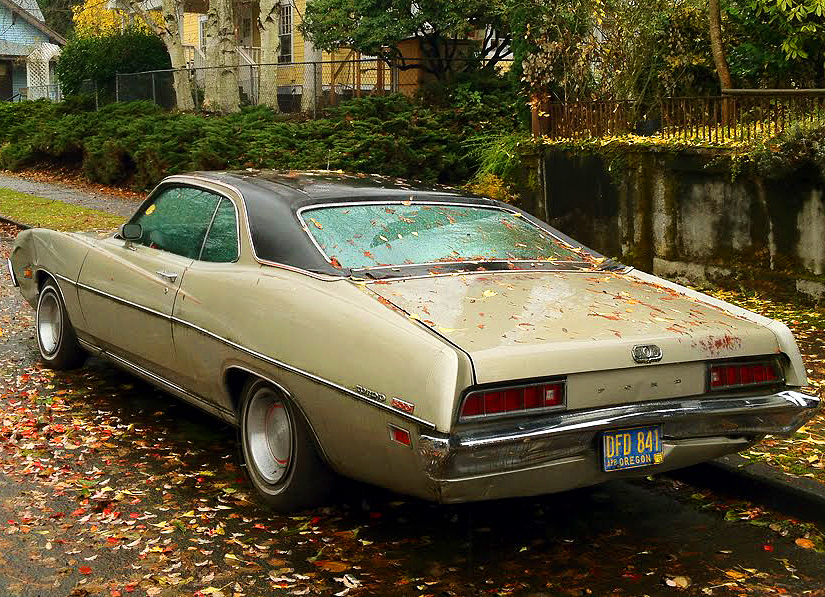
“HALO” – this type is similar to full vinyl roofs, but the vinyl stops just short of the tops of the side windows and windshield, allowing a “halo” of painted sheet metal to appear between vinyl and glass areas. This 1971 Ford Torino coupe is an example of how many halo type vinyl roofs looked originally. (Photo credit: T. Sanders)
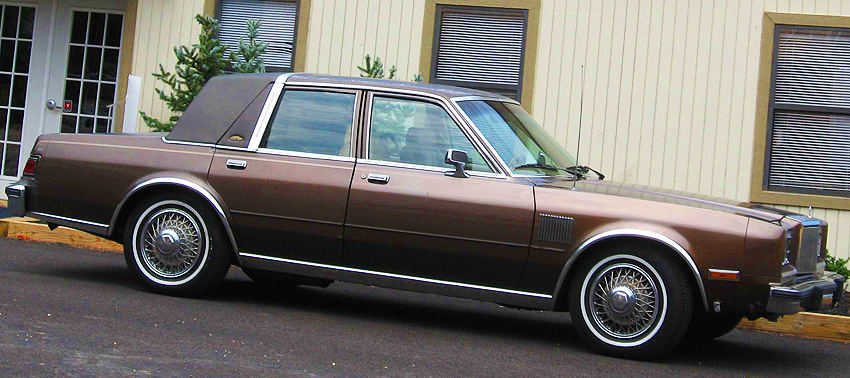
“LANDAU” – covers only the rear portion of the roof. Landau roofs were used equally on coupes and sedans. Shown is a 1988 Chrysler Fifth Avenue. This Chrysler trend of integrating part of the rear door with vinyl covering was used on many of their models in the 1980s, and proved quite popular with buyers. (Photo credit: Wikicars)
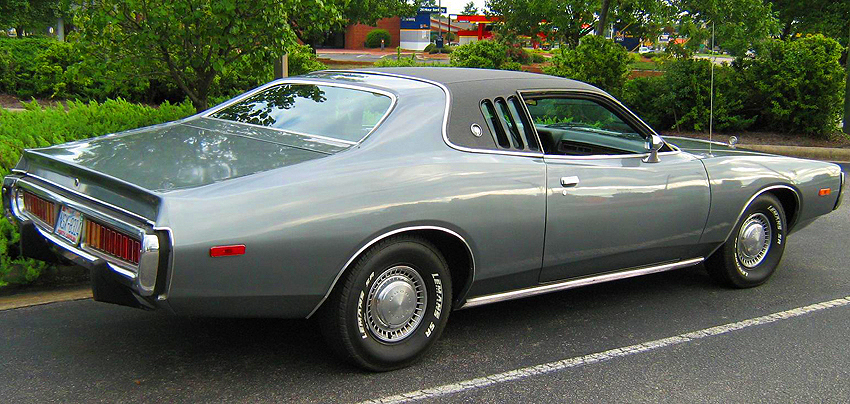
“UP AND OVER” – Here a 1973 Dodge Charger features a creative vinyl roof covering favored by Chrysler Corporation during the 1970s. (Photo credit: Wikicars)
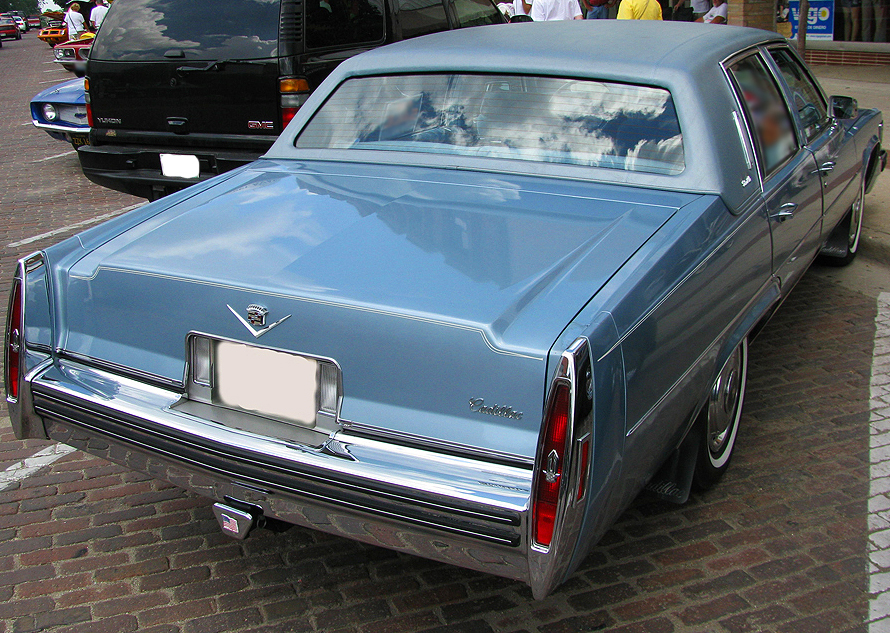
“PADDED” – This 1979 Cadillac Sedan de Ville’s FULL vinyl roof is an example of the more modern construction of a thick layer of padding covered with a smoother surface material. These were introduced on higher-end American cars in the mid-1970s and became the norm through the 1980s. (Photo credit: Sean Connor)
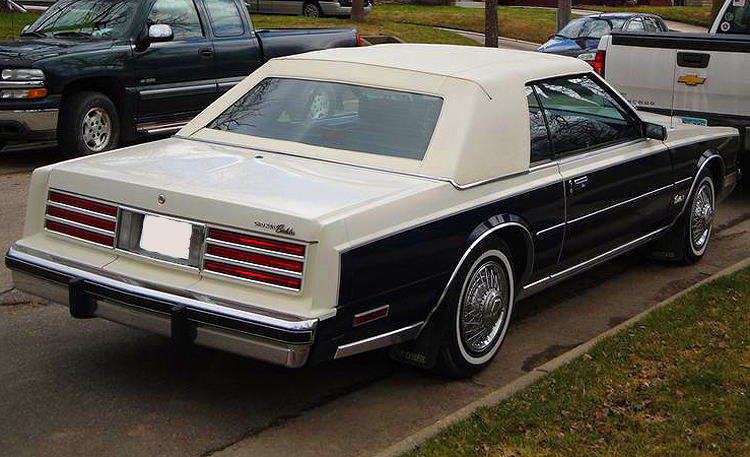
“SIMULATED CONVERTIBLE” – features vinyl material that simulates the grain of convertible top material, along with metal bars underneath to create a three-dimensional appearance of metal brackets underneath a softtop roof. Here, a 1980 Chrysler Cordoba is an example of the type of roof covering most popular from 1977-82 when American convertibles were noteably absent from production. (Photo credit: Sean Connor)
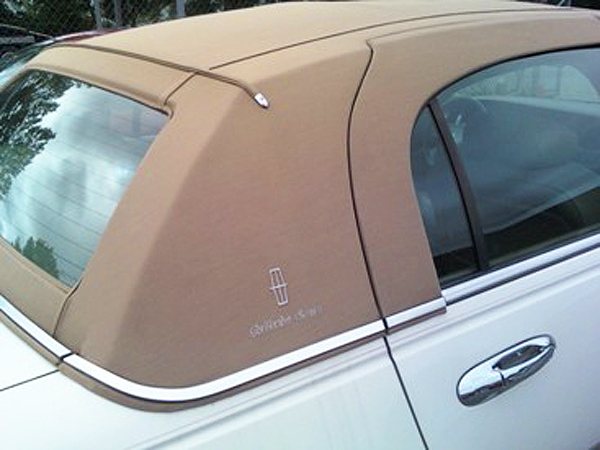
“AFTERMARKET” – any creation tacked on after the fact by a company other than the manufacturer, on a car that was not designed with a vinyl roof covering in mind. They often apply the “convertible look” to four-door sedans such as this 2003 Lincoln Town car shown. (Photo credit: Sean Connor)

“VINYL WRAPPING” – fast becoming an in-vogue trend today is the practice of applying clear vinyl sections to all body panels of the car. Shown is a Porsche 911 with clear vinyl wrap desgined to create a dull matte finish. Vinyl can also be used to apply graphics or change the color of a car completely. (Photo credit: S. Lee)
PART III – SLIDESHOW.
CLICK ON ANY OF THE PICTURES IN THE SLIDE SHOW BELOW TO EXPAND TO FULL SIZE. USE ARROWS UNDERNEATH PICTURES TO SCROLL BACKWARD OR FORWARD.
- Above: the new-for-1928 Ford Model A coupe is an example of the first type of automotive vinyl roof popular during the mid-1920s to early ’30s designed to evoke memories of horseless carriages.
- Although it looks like a fully retractable convertible roof, it is fixed in place and cannot be lowered. One might say these roofs were the first form of “retro” auto design. (Photo credit: Conceptcarz)
- The vinyl roof covering on this 1929 Chrysler 4-door sedan is an example of how many sedans and coupes were decorated from the mid-1920s through the mid-1930s.
- The new-for-1934 Chrysler Airflow’s modern, integrated metal roof was key to creating a look of pure, smooth lines. As the original “aero” look of this car inspired other designers to create similar designs, vinyl roofs became yesterday’s news.
- 1934 Chrysler Airflow coupe.
- From 1950-51, Ford offered vinyl on coupe versions of four of its models to simulate convertibles. 1950 Ford Crestliner coupe shown.
- The 1950-51 Mercury Monterey coupe was the second of four Ford Motor Company models available with a vinyl roof covering option.
- A 1950 Lincoln Lido coupe equipped with optional vinyl roof covering. The option didn’t catch on and was dropped the following year. (Photo credit: Len Jefford)
- A 1950 Lincoln Cosmopolitan coupe shown with optional vinyl roof covering. (Photo credit: Z. Quigley)
- Vinyl roofs were an option on 1950-51 Frazer models, such as this 1950 four-door sedan.
- Kaiser Motors also offered vinyl roofs for a short period during 1950-51. 1951 sedan shown.
- The Cadillac Eldorado Brougham of 1957-59 was one of the first cars to bring back vinyl roof covering. Standard on this model was a very expensive “vicodec” material.
- A closer look at Cadillac’s “vicodec” roof, standard on all 1957-59 Eldorado Broughams. 1957 model shown.
- Lincoln Town Car long-wheelbase “limousines” were all equipped with vinyl roofs from 1959-60, as this 1959 advertisement shows. (Photo credit: Ford Motor Company)
- This 1962 Ford Thunderbird advertisement introduces the “Landau” edition model with vinyl roof. .
- A closer look at a 1962 Thunderbird Landau Edition vinyl roof. Notice the “landau bar” designed to simulate luxury coaches from a bygone era. (Photo credit: N. Baum)
- For 1962, General Motors followed Ford’s lead with the Thunderbird and introduced vinyl roofs as an option on lower-priced hardtop coupes such as the Oldsmobile Starfire (shown) and Buick Skylark sister version. (Photo credit: C. Royster)
- Many carmakers in the early ’60s sought to make their pillarless coupes look as much like convertibles as possible. The creases on the roof shown here were actually in the metal roof itself. Adding a layer of vinyl fabric with fake stiching designs only enhanced the illusion.
- The vinyl roof look proved so popular on 1962 Ford and G.M. midsize pillarless coupes that both companies brought the look to full-size cars for 1963. Shown, a 1963 Cadillac Fleetwood. (Photo credit: G. Gjerdingen)
- Like most coupes of the era, this 1963 Cadillac Coupe de Ville is equipped with a vinyl roof covering that goes to great lengths to simulate the look of a convertible top. (Photo credit: Collectioncar.com)
- A full-size 1963 Ford Galaxie coupe with a pseudo-convertible vinyl roof.
- A 1963 Chevrolet Impala SS coupe with vinyl roof covering.
- A first-year 1963 Pontiac Grand Prix with vinyl roof covering. (Photo credit: Polara64)
- When Ford introduced the 1964 Mustang, vinyl was there too.
- Since vinyl roofs were perceived as sporty during the 1960s, they were offered on musclecars such as this 1967 Chevrolet Camaro SS.
- Offered for 1970 on Mercury Cougars was this “houndstooth” patterned vinyl roof cover. (Photo credit: hooniverse)
- A closer look at a 1970 Mercury Cougar equipped with a “houndstooth” vinyl roof.
- “HALO” – this type is similar to full vinyl roofs, but the vinyl stops just short of the tops of the side windows and windshield, allowing a “halo” of painted sheet metal to appear between vinyl and glass areas. This 1971 Ford Torino coupe is an example of how many halo type vinyl roofs looked originally.
- “UP AND OVER” – Here a 1973 Dodge Charger features a creative vinyl roof covering not often seen.
- This 1976 Chrysler New Yorker shows another version of Chrysler Corporation’s “up and over” vinyl roof look.
- This 1974 Dodge Challenger was one of many equipped with the vinyl roof option, which goes to show this option was so popular by the mid-’70s that it was considered normal…even on muscle cars.
- A closer look at the vinyl roof covering on 1970-74 style Dodge Challengers. (Photo credit: R. Spiegelman)
- Just over 10,000 Jaguar XJC hardtop coupes were produced during the 1975 – 1977 model years, powered by either an inline 6-cylinder or V12 engine. All of them left the victory with vinyl roof coverings.
- “PADDED” – This 1979 Cadillac Sedan de Ville’s FULL vinyl roof is an example of the more modern construction of a thick layer of padding covered with a smoother surface material. These were introduced on higher-end American cars in the mid-1970s and became the norm through the 1980s. (Photo credit: Sean Connor)
- Few things say luxury like the word Brougham in cursive writing. A 1976 Cadillac Fleetwood Brougham with padded soft-touch vinyl roof covering.
- “CANOPY” type roofs cover only the front portion of the roof. Above, a 1977 Lincoln Mark V Givenchy Edition with a canopy vinyl roof. (Photo credit: Ford Motor Company)
- “LANDAU” – This style covers only the rear portion of the roof. Landau roofs were used equally on coupes and sedans. Shown is a 1988 Chrysler Fifth Avenue. This Chrysler trend of integrating part of the rear door with vinyl covering was used on many of their models in the 1980s, and proved quite popular with buyers.
- Ford offered this creative style of vinyl roof covering on 1977-1979 Thunderbirds and Mercury Cougars that combines “canopy” and “landau” styles.
- “SIMULATED CONVERTIBLE” – features vinyl material that simulates the grain of convertible top material, along with metal bars underneath to create a three-dimensional appearance of metal brackets underneath a softtop roof. Here, a 1980 Chrysler Cordoba is an example of the type of roof covering most popular from 1977-82 when American convertibles were noteably absent from production.
- (1989 LINCOLN TOWN CAR) Like most American luxury cars of the 1980s, 100% of Lincoln Town Cars from 1980-89 were equipped with either full or landau padded vinyl roofs. 1989 Town Car shown.
- One of the reasons vinyl roof popularity faded is the look does not integrate smoothly with door frames that are cut into a car’s roofline. 1996 Cadillac Fleetwood shown. (Photo credit: A.L. Autotop)
- A closer look at a 1993-96 style Cadillac Fleetwood, one of the last American cars to offer vinyl roof coverings as a factory option. 1996 model shown.
- “FULL” – this style covers the entire roof, including A-pillars. This 1997 Rolls-Royce reminds us that Europeans were equally seduced by vinyl and had a harder time giving it up than Americans did.
- “AFTERMARKET” – any creation tacked on after the fact by a company other than the manufacturer, on a car that was not designed with a vinyl roof covering in mind. They often apply the “convertible look” to four-door sedans such as this 2003 Lincoln Town car shown. (Photo credit: Sean Connor)
- “VINYL WRAPPING” – fast becoming an in-vogue trend today is the practice of applying clear vinyl sections to all body panels of the car. Shown is a Porsche 911 with clear vinyl wrap desgined to create a dull matte finish. Vinyl can also be used to apply graphics or change the color of a car completely. (Photo credit: S. Lee)
- This ’79 Lincoln Mark V illustrates how vinyl roofs can trap moisture and cause rust. (Photo credit: A. Ash)
- “Buyer beware” if looking at purchasing an older vinyl-topped vehicle that has been kept outside and not cared for. Here, extensive corrosion is found on the metal roof panel of a 1966 Thunderbird (Photo credit: G. Vida)
- Here, a Ferrari is vinyl wrapped to create a different color.
- Today, vinyl wrapping can be used to simulate the look of extremely expensive and lightweight carbon fiber. (Photo credit: T. Sanders)
- Today, whole cars are covered in thinner vinyl sheets that can be used to give the car a painted look of a different color (shown here), or a see-through matte finish look.
- Traditional use of modern style vinyl wrap is for decal application. (Photo credit: E. Jones)
- 1958 Cadillac Eldorado Brougham.
- 1950 Mercury Monterey coupe.
- 1934 Chrysler Airflow sedan.
- 1979 Cadillac Sedan de Ville with vinyl padded roof.
- 1962 Ford Thunderbird Landau edition advertisement.
- Like most American luxury cars of the 1980s, 100% of Lincoln Town Cars from 1980-89 were equipped with padded vinyl roofs.
5-8-a


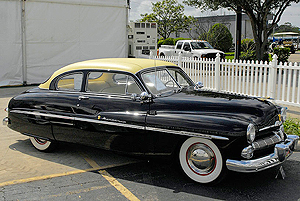
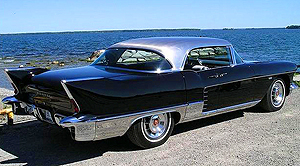
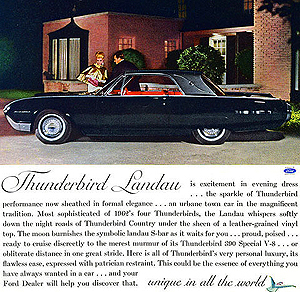
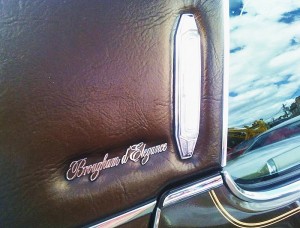
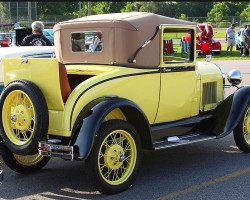
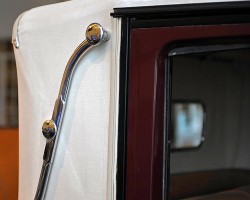
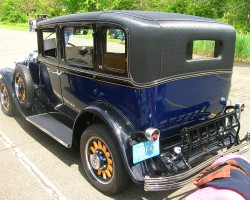
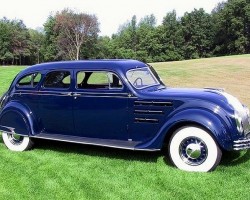
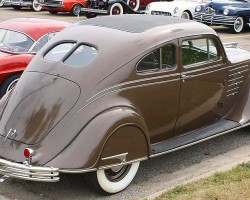
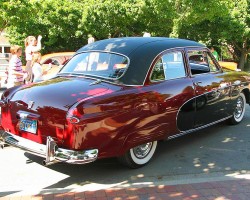
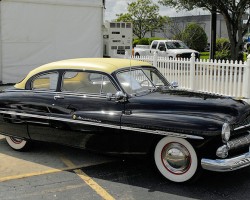
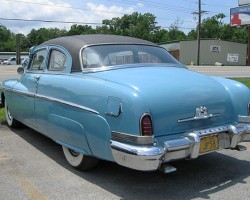
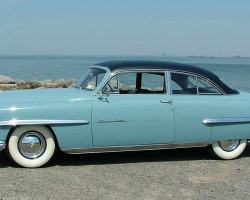
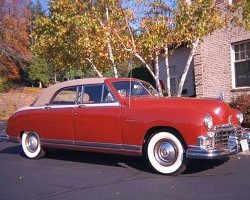
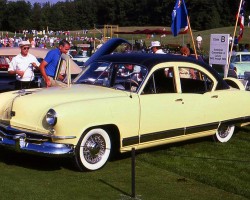
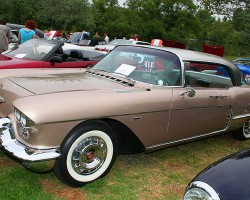
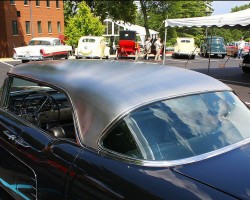
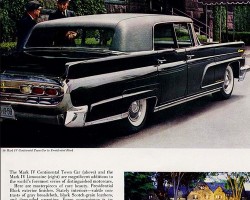
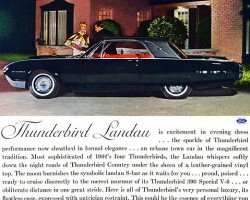
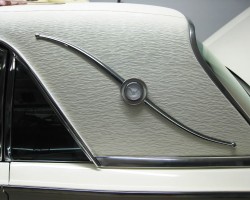
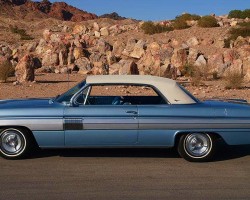
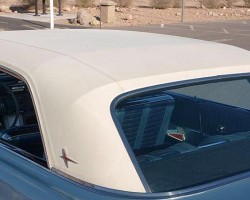
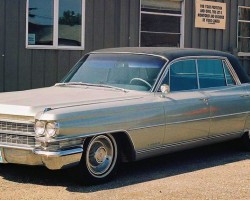
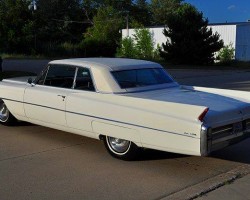
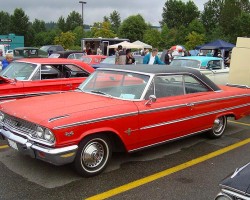
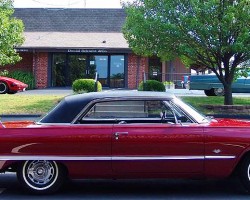
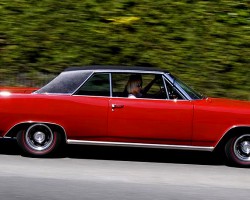
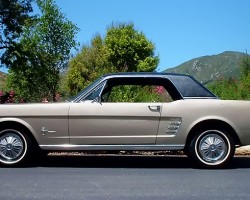
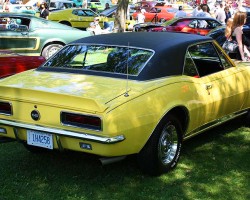
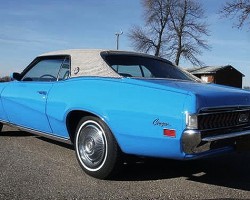
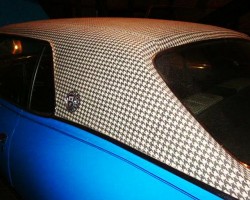
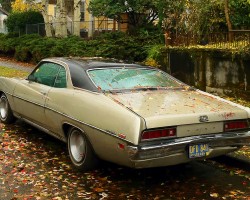
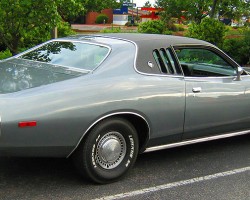
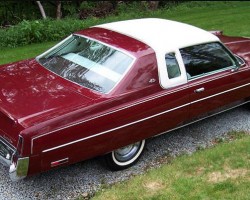
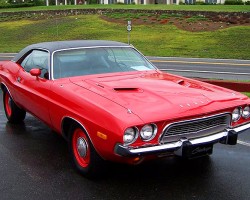
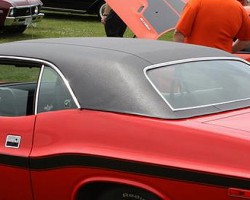
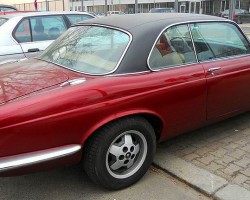
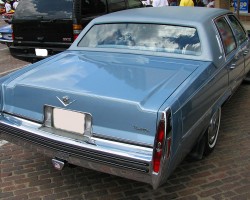
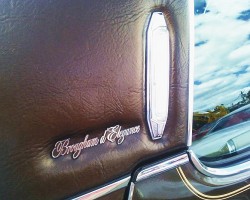
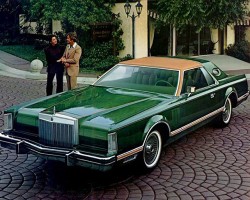
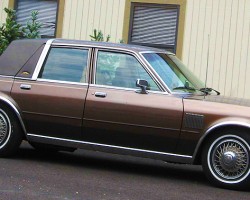
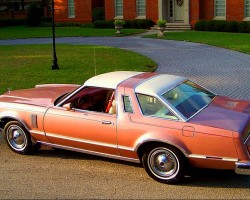
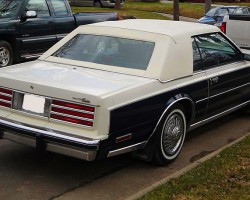
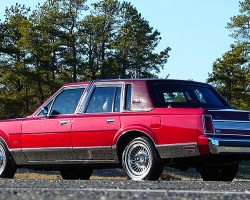
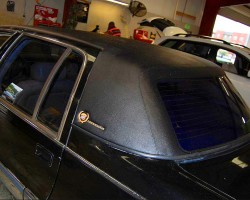
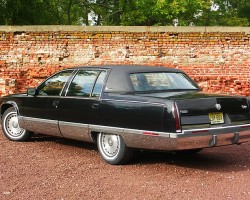
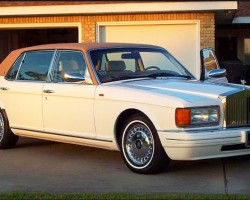
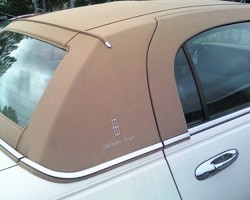

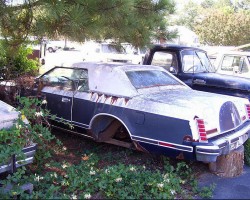
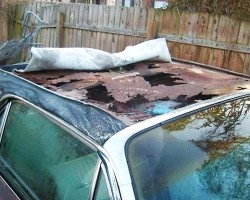
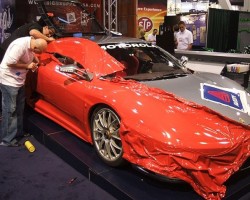
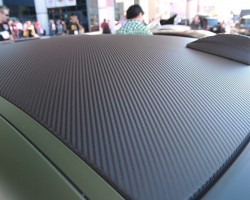
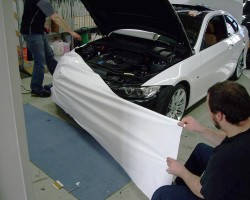
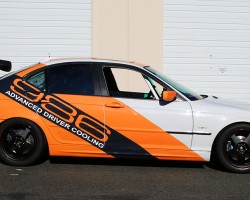
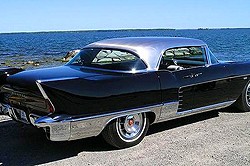
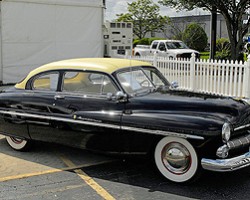
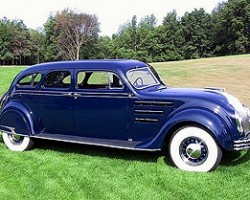
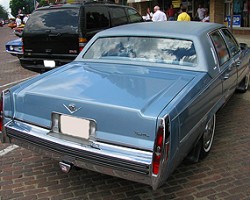
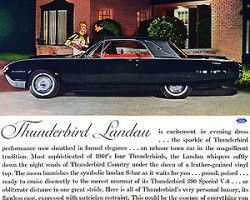
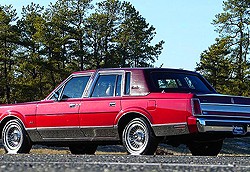

































It’s a bit of a stretch to say that vinyl wraps that are usually meant to simulate custom paint at a lower cost and in a reversible way (say, on a leased or corporate fleet car) are a “comeback” of the old leather-look vinyl top. I have seen it to replicate station wagon-style woodgrain paneling though.
Sir can a vinyl top be put on a 4 door stanza we have a dark blue it came with the car ,I would like to add a white vinyl film to the top so our car want look like 100 others in the parking lot can it be done and who do you get we live in Lakeland,Florida thank you ferook50@gmail.com Joe